Climate Change and the Health of Indigenous Populations
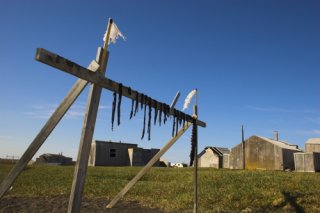
There are many different Indigenous populations in the United States. These include those native to the contiguous United States, Alaska Natives, and Pacific Islanders. Many of these groups are more vulnerable to the health impacts of climate change than the general population because:
- In general, Indigenous populations have higher rates of certain medical conditions than the general U.S. population.1 These include asthma, heart disease, diabetes, obesity, and dementia.2 These chronic medical conditions put individuals at more risk for illness and injury as the climate changes.3
- They have a unique connection to the natural environment. Climate change is threatening natural resources and ecosystems that are essential to people’s livelihoods, food sources, and cultural practices.4
- Institutional barriers can affect tribes’ abilities to adapt.5 These barriers can limit tribes’ access and control over traditional lands and natural resources that will be increasingly impacted by climate change.6
- Many Indigenous populations lack reliable infrastructure. They cannot always access essential services, such as transportation, drinking water, sanitation, disaster response, and health care. This limits their ability to plan for and respond to climate-related threats.7
Key Threats to the Health of Indigenous Populations
A number of climate-related hazards threaten the health of Indigenous populations in the United States. Below are some examples of the potential health impacts of these hazards.
Water-Related Illnesses
Many Indigenous communities already lack safe drinking water and/or drinking water treatment infrastructure. This is particularly true for those located on remote lands.11 Another threat to water infrastructure is thawing permafrost.12 When permafrost thaws, it destabilizes the ground above it, affecting buildings and other infrastructure.
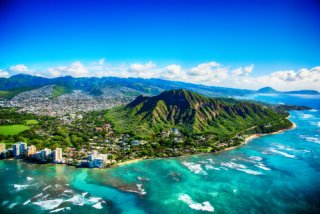
Untreated, contaminated drinking water can cause disease outbreaks and illnesses. For example, infants living on the Fort Apache reservation in Arizona have had higher hospitalization rates for diarrheal disease than infants in the general U.S. population.13
Increasing water temperatures and other climate changes can also encourage the growth of harmful algal blooms. People can get sick if they swim in, drink water, or eat fish or shellfish contaminated by a harmful algal bloom. In southeast Alaska, several tribes are working with government agencies to monitor harmful algal blooms.14 These efforts are helping to ensure the safety of subsistence shellfish harvests.
In Hawai‘i and the U.S.-affiliated Pacific Islands, rising temperatures, changing rainfall patterns, and sea level rise threaten water supplies. Saltwater contamination from sea level rise is already affecting water supplies on some islands.15 In addition, severe droughts are already common and can lead to clean water shortages.16
Mental Health Effects
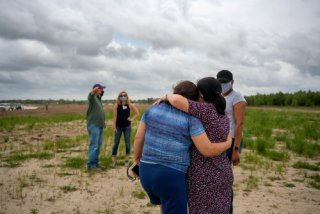
Many Indigenous peoples already have trauma from colonization, removal from their homelands, and loss of traditional cultural practices.18 Climate change impacts to the natural environment are worsening this trauma in some areas.19
For example, the Isle de Jean Charles Band of Biloxi-Chitimacha-Choctaw tribe in Louisiana has lost 98 percent of its land mass.21 This loss is largely due to erosion from severe storms, sea level rise, and development.22 The land loss has separated families as some individuals move to a new community. It has also greatly impacted the tribe’s culture, livelihoods, traditional foods, and sacred places.23
In many Indigenous communities, relationships among people, wildlife, and the natural environment are important to mental and spiritual health. A changing climate is disrupting these connections and threatening social networks and knowledge-sharing. This can increase the risk of mental health impacts.24
Some Indigenous peoples may be part of other groups vulnerable to climate change. This can increase their health risks. For instance, many Indigenous peoples have existing medical conditions that increase their sensitivity to climate hazards.9 They may also have greater exposures to health threats because of their living and working conditions. For example, many Indigenous communities struggle with poverty, inadequate infrastructure, and limited economic opportunities.10 These challenges further restrict their ability to cope with climate change threats.
Food System Impacts
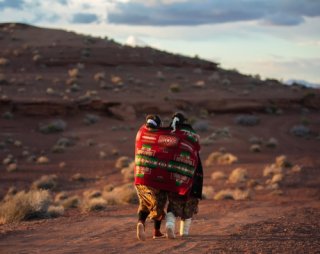
Climate change affects the supply and quality of traditional foods, subsistence foods, and cultivated crops in many regions.25 For example, warming sea surface temperatures have been linked with increases in diseases and mercury levels in shellfish. This is affecting tribes on the West and Gulf Coasts and Alaska Natives.26 In the Northern Great Plains, reduced streamflow and warmer water temperatures are causing declines in subsistence fisheries including salmon, trout, and mussels.27
In Hawai‘i and the U.S.-affiliated Pacific Islands, many communities gather food from the land and sea. Rising sea levels, high waves from storms, and ocean warming and acidification threaten these resources.28 Lack of access to traditional foods can lead to poor nutrition, obesity, diabetes, and mental health effects.29
Thawing permafrost in some Alaska Native communities is posing threats to food security and people’s health. For example, some communities use ice cellars or ice houses to store food.30 As permafrost thaws, food spoilage and sickness may become more common without other storage options. However, some communities, like the Iñupiat in Alaska, are addressing the problem by improving or moving cellars and designing new technologies to improve food storage.31
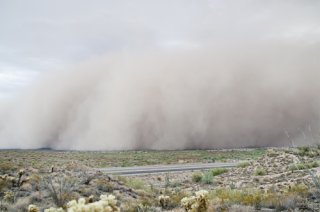
Respiratory Illnesses
Climate change may increase outdoor air pollutants, such as ground-level ozone and particulate matter in wildfire smoke and dust from droughts.32 Blowing dust currently affects communities in the Southwest, particularly in Arizona and New Mexico. This dust is likely to worsen with increasing droughts.33
Some Indigenous communities living near urban or industrial areas already are exposed to harmful air pollution. Air quality in these areas can worsen with climate change.34
Exposure to dust, wildfire smoke, and certain air pollutants can cause or worsen asthma, pneumonia, bronchitis, and other respiratory conditions.35 Exposure to smoke-related pollutants in wildfires during pregnancy has also been linked to miscarriage and low infant birth weight.36
Tribes, Indigenous organizations, government agencies, and others can help build resilience against climate change.37 Some actions include:
- Create climate action plans. Many tribes are already working with climate scientists and other experts to adapt to a changing climate. The Institute for Tribal Environmental Professionals developed a tribal planning toolkit to help.
- Invest in energy strategies. EPA provides tools to help tribal governments improve energy efficiency, reduce air pollution, and save money.
- Stay informed about air quality. AirNow provides air quality information to help people make informed choices about outdoor activities and possible health impacts.
- Protect water quality on tribal lands. Tribes can improve water management programs with EPA training, data, tools, and funding.
Related Resources
- Climate and Health Assessment
- Fifth National Climate Assessment, Chapter 16: Tribes and Indigenous Peoples
- U.S. Climate Resilience Toolkit: Tribal Nations
EPA resources:
- Environmental Protection in Indian Country
- Climate Change
- Climate Change Indicators in the United States
- Climate Change Science
Other resources:
Endnotes
1 Jantarasami, L.C., et al. (2018). Ch. 15: Tribes and Indigenous peoples. In: Impacts, risks, and adaptation in the United States: Fourth national climate assessment, volume II. U.S. Global Change Research Program, Washington, DC, USA, p. 582.
2 Jantarasami, L.C., et al. (2018). Ch. 15: Tribes and Indigenous peoples. In: Impacts, risks, and adaptation in the United States: Fourth national climate assessment, volume II. U.S. Global Change Research Program, Washington, DC, USA, p. 582.
3 Jantarasami, L.C., et al. (2018). Ch. 15: Tribes and Indigenous peoples. In: Impacts, risks, and adaptation in the United States: Fourth national climate assessment, volume II. U.S. Global Change Research Program, Washington, DC, USA, p. 582.
4 Whyte, K. et al. (2023). Ch. 16: Tribes and Indigenous Peoples. Fifth National Climate Assessment. U.S. Global Change Research Program, Washington, DC, p. 16-9.
5 Whyte, K. et al. (2023). Ch. 16: Tribes and Indigenous Peoples. Fifth National Climate Assessment. U.S. Global Change Research Program, Washington, DC, p. 16-15.
6 Whyte, K. et al. (2023). Ch. 16: Tribes and Indigenous Peoples. Fifth National Climate Assessment. U.S. Global Change Research Program, Washington, DC, p. 16-15.
7 Whyte, K. et al. (2023). Ch. 16: Tribes and Indigenous Peoples. Fifth National Climate Assessment. U.S. Global Change Research Program, Washington, DC, p. 16-15.
8 Gamble, J.L., et al. (2016). Ch. 9: Populations of concern. In: The impacts of climate change on human health in the United States: A scientific assessment. U.S. Global Change Research Program, Washington, DC, p. 253.
9 Gamble, J.L., et al. (2016). Ch. 9: Populations of concern. In: The impacts of climate change on human health in the United States: A scientific assessment. U.S. Global Change Research Program, Washington, DC, p. 253.
10 Whyte, K. et al. (2023). Ch. 16: Tribes and Indigenous Peoples. Fifth National Climate Assessment. U.S. Global Change Research Program, Washington, DC, p. 16-10.
11 Gamble, J.L., et al. (2016). Ch. 9: Populations of concern. In: The impacts of climate change on human health in the United States: A scientific assessment. U.S. Global Change Research Program, Washington, DC, p. 254.
12 Huntington, H.P. et al. (2023). Ch. 29: Alaska. Fifth National Climate Assessment. U.S. Global Change Research Program, Washington, DC, p. 29-12.
13 Gamble, J.L., et al. (2016). Ch. 9: Populations of concern. In: The impacts of climate change on human health in the United States: A scientific assessment. U.S. Global Change Research Program, Washington, DC, p. 254.
14 U.S. Global Change Research Program. (2021). U.S. climate resilience toolkit: Alaskan tribes join together to assess harmful algal blooms.
15 Frazier, A.G. et al. (2023). Ch. 30: Hawaiʻi and US-Affiliated Pacific Islands . Fifth National Climate Assessment. U.S. Global Change Research Program, Washington, DC, p. 30-17.
16 Frazier, A.G. et al. (2023). Ch. 30: Hawaiʻi and US-Affiliated Pacific Islands . Fifth National Climate Assessment. U.S. Global Change Research Program, Washington, DC, p. 30-17.
17 Frazier, A.G. et al. (2023). Ch. 30: Hawaiʻi and US-Affiliated Pacific Islands . Fifth National Climate Assessment. U.S. Global Change Research Program, Washington, DC, p. 30-17.
18 Jantarasami, L.C., et al. (2018). Ch. 15: Tribes and Indigenous peoples. In: Impacts, risks, and adaptation in the United States: Fourth national climate assessment, volume II. U.S. Global Change Research Program, Washington, DC, USA, pp. 582.
19 Whyte, K. et al. (2023). Ch. 16: Tribes and Indigenous Peoples. Fifth National Climate Assessment. U.S. Global Change Research Program, Washington, DC, p. 16-10.
20 Whyte, K. et al. (2023). Ch. 16: Tribes and Indigenous Peoples. Fifth National Climate Assessment. U.S. Global Change Research Program, Washington, DC, p. 16-11.
21 Carter, L., et al. (2018). Ch. 19: Southeast. In: Impacts, risks, and adaptation in the United States: Fourth national climate assessment, volume II. U.S. Global Change Research Program, Washington, DC, USA, p. 761.
22 Carter, L., et al. (2018). Ch. 19: Southeast. In: Impacts, risks, and adaptation in the United States: Fourth national climate assessment, volume II. U.S. Global Change Research Program, Washington, DC, USA, p. 761.
23 Carter, L., et al. (2018). Ch. 19: Southeast. In: Impacts, risks, and adaptation in the United States: Fourth national climate assessment, volume II. U.S. Global Change Research Program, Washington, DC, USA, p. 761.
24 Jantarasami, L.C., et al. (2018). Ch. 15: Tribes and Indigenous peoples. In: Impacts, risks, and adaptation in the United States: Fourth national climate assessment, volume II. U.S. Global Change Research Program, Washington, DC, USA, pp. 582-583.
25 Whyte, K. et al. (2023). Ch. 16: Tribes and Indigenous Peoples. Fifth National Climate Assessment. U.S. Global Change Research Program, Washington DC, p. 16-9.
26 Gamble, J.L., et al. (2016). Ch. 9: Populations of concern. In: The impacts of climate change on human health in the United States: A scientific assessment. U.S. Global Change Research Program, Washington, DC, p. 254.
27 Conant, R.T., et al. (2018). Ch. 22: Northern Great Plains. In: Impacts, risks, and adaptation in the United States: Fourth national climate assessment, volume II. U.S. Global Change Research Program, Washington, DC, USA, p. 964.
28 Frazier, A.G. et al. (2023). Ch. 30: Hawaiʻi and US-Affiliated Pacific Islands . Fifth National Climate Assessment. U.S. Global Change Research Program, Washington, DC, p. 30-18.
29 Gamble, J.L., et al. (2016). Ch. 9: Populations of concern. In: The impacts of climate change on human health in the United States: A scientific assessment. U.S. Global Change Research Program, Washington, DC, pp. 253–254.
30 Huntington, H.P. et al. (2023). Ch. 29: Alaska. Fifth National Climate Assessment. U.S. Global Change Research Program, Washington, DC, p. 29-13.
31 U.S. Global Change Research Program (2017). U.S. climate resilience toolkit: Iñupiat work to preserve food and traditions on Alaska's North Slope.
32 West, J.J. et al. (2023). Ch. 14: Air Quality. Fifth National Climate Assessment. U.S. Global Change Research Program, Washington, DC, p. 14-6.
33 West, J.J. et al. (2023). Ch. 28: Southwest. Fifth National Climate Assessment. U.S. Global Change Research Program, Washington, DC, p. 28-22.
34 Gamble, J.L., et al. (2016). Ch. 9: Populations of concern. In: The impacts of climate change on human health in the United States: A scientific assessment. U.S. Global Change Research Program, Washington, DC, p. 254.
35 West, J.J. et al. (2023). Ch. 14: Air Quality. Fifth National Climate Assessment. U.S. Global Change Research Program, Washington, DC, p. 14-9.
36 Hayden, M.H. et al. (2023). Ch. 15: Human Health. Fifth National Climate Assessment. U.S. Global Change Research Program, Washington, DC, p. 15-15.
37 Whyte, K. et al. (2023). Ch. 16: Tribes and Indigenous Peoples. Fifth National Climate Assessment. U.S. Global Change Research Program, Washington, DC, p. 16-16.
